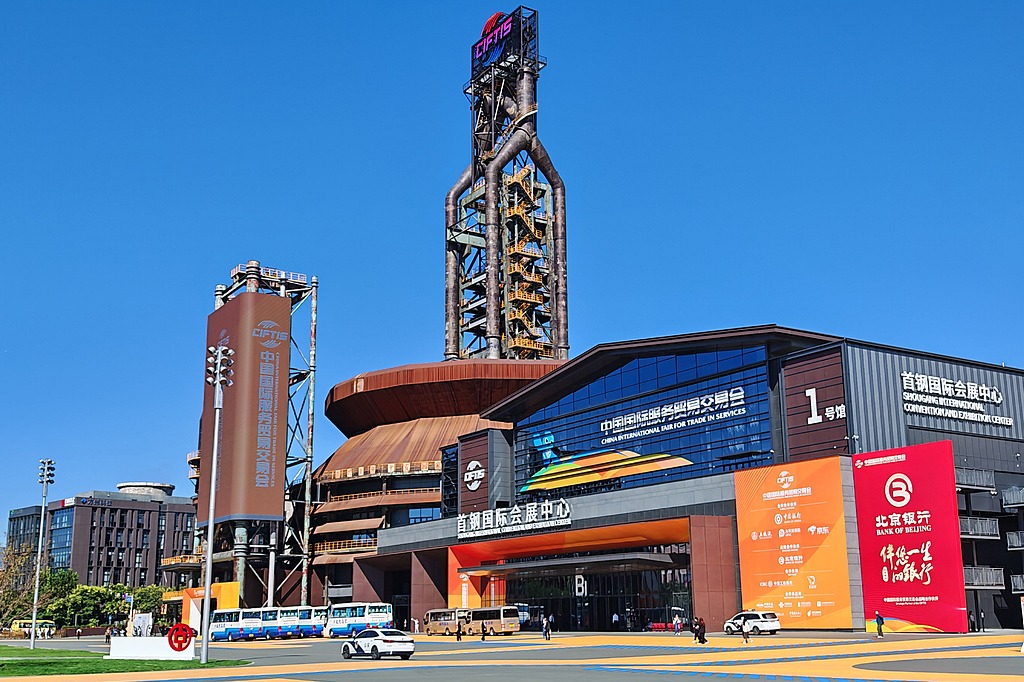Coin sculpture shows rich Sino-Mexican legacy from revolutionary times
China Daily | Updated: 2021-07-12 07:45
At the first sight of the huge sculpture of a coin set in Jinggangshan in East China's Jiangxi province, Diego Barroso, a Mexican language teacher based in Shanghai, wonders how the pattern of Latin America occurs on the China-made coins.
The coin, made by the Red Army Mint during the Chinese revolution, was engraved with an eagle carrying a snake in its mouth, standing on a cactus growing between rocks in a lake. On the wings of the eagle is engraved the Chinese character gong, which means workers. The picture is quite similar to the national emblem of Mexico.
To figure out the connection between the two countries represented on the coins, Barroso came to Jinggangshan, the "cradle" of the Chinese revolution.
In 1928, in a bid to consolidate and develop revolutionary bases, forefathers of the Communist Party of China Mao Zedong and Zhu De, with their army, built the Red Army Mint in Jinggangshan, modeling the coins on the Mexican silver dollar.
A professor from the China Executive Leadership Academy in Jinggangshan explained to Barroso why they chose Mexican money.
Wen Shangqing, an expert on the economic history of the CPC, says that, during the late Qing Dynasty (1644-1911) and the period before the New China was established in 1949, the Mexican silver dollar was among the most widely used foreign currencies in southern and central China.
As early as colonial times, some well-known silversmiths in Mexico started to make silver coins and molds, some of which circulated to other countries including China, says Javier Ocampo, a Mexican expert in local chronicles study.
"After the Red Army Mint opened, workers used silver and jewelry captured from the enemy to mint coins, on which they engraved the Chinese character gong to represent the government of workers, farmers and soldiers," says Li Haiquan, director of the Red Army Mint Site in Jinggangshan.
Mao emphasized the color and quality of the coins, asking the workers to use fine silver as their raw material, Li says.
The mint soon grew to employ dozens of workers and had the capability of producing more than 400 coins at a time in one stove. It gained wide support and trust from people in the revolutionary bases.
More than 10,000 coins had been made by the mint in the six months since it was put into operation, and the flow of coins reached Jiangxi's counties along provincial boundaries like Yongxin and Suichuan.
After hearing the story about the Mexican silver dollar's significant contribution in Jinggangshan during the Chinese revolution, Ocampo says, "I feel so proud as a Mexican."
Jin Jiadong, 70, is one of the very few who own a real coin produced by the mint at that time.
About 90 years ago, two of Jin's uncles joined the Red Army and were later killed in battle.
"The coin was given by the army to express condolences to my family," says Jin, who is also a founder of the Jin Jiu Fu Coin Museum, a national museum located in Nanchang, Jiangxi. The coin is cherished by his family members.
Wei Xiuchang, an official from the local financial supervisory department, says the mint was a meaningful effort and laid the foundation for the issuance of renminbi.
At the souvenir store of the Red Army Mint Site, Barroso bought a commemorative coin through digital payment, which made him reflect on the 93 years of history since the Red Army Mint-made coin was cast. Barroso is amazed by the rapid progress of China's money and finance industries.
With the continuous development of China's reform and opening-up, as well as economic globalization, the internationalization of RMB has been steadily promoted and it is playing an increasingly important role in global trade, investment and financing.
This year marks the fifth anniversary of the RMB being added to the Special Drawing Rights basket of the International Monetary Fund.
According to the 2020 RMB Internationalization Report of the People's Bank of China, the size of renminbi reserves was the fifth-highest in the IMF's Currency Composition of the Official Foreign Exchange Reserves, with a market share of 1.95 percent, 0.88 percent higher than that of 2016 when the renminbi was included in the IMF's Special Drawing Rights currency basket. According to incomplete statistics, more than 70 central banks or monetary authorities have incorporated RMB into their foreign exchange reserves.
Ray Dalio, founder of hedge fund Bridgewater Associates, says that RMB will play an increasingly significant role and be more widely used in the coming years, with more international trade and financial transactions being settled in RMB.
"I would like to share the stories of the coin with my daughter when I go back to Shanghai," Barroso says in front of the sculpture of the China-made coin.
Xinhua
























